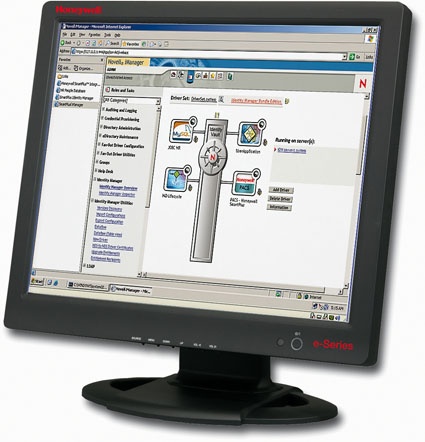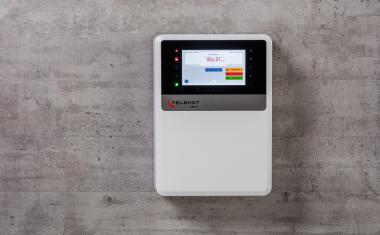Considering the Transition from Analog to IP-based Surveillance
When it comes to new security installations, Internet protocol (IP)-based systems are growing in prevalence as viable options alongside traditional analog-based approaches. IP is h...


When it comes to new security installations, Internet protocol (IP)-based systems are growing in prevalence as viable options alongside traditional analog-based approaches. IP is here to stay and it offers a myriad of benefits. But navigating the road to IP requires careful consideration of many factors, from network infrastructure to physical security needs. Jeremy Kimber, Commercial Operational Marketing Leader EMEA at Honeywell Security explains how one can rationalize and navigate a move from analog to IP, especially in the light of tight budgets, undecided industry standards and increased scrutiny on new expenditures.
The answer is complex, although one thing is certain: IP migration is not a matter of if - it is simply a matter of when. Overall, industry research shows that the video surveillance market is approaching a tipping point, where the volume and revenue of IP units will soon surpass analog-based systems. And, as the market moves toward this point, the price difference will fall, and the capabilities and benefits of IP will only continue to grow.
For quite some time, the proprietary nature of IP systems has been a primary barrier to IP adoption, but the tide is changing. In the past year, two industry groups - the Physical Security Interoperability Alliance (PSIA) and the Open Network Video Interface Forum (ONVIF) - have each emerged with the first versions of their IP system specifications. These specifications offer many potential benefits. In the case of PSIA, for example, the industry group's standard aims to establish a primary protocol architecture not only for communication and compatibility between IP-based cameras, but also with access, intrusion and building controls.
Choice of Features
Although market preference is for one agreed-upon standard, this industry development helps further build the case for IP adoption by making it easier than before and laying a solid foundation for shifting to IP-based systems. In light of this inevitable shift, beginning a migration to IP-based systems is a necessary way to future-proof an organization and prepare for when IP will be the dominant form of video. To what degree one should migrate to IP, however, is a question with many possible answers.
The way to most effectively implement IP depends on the needs of an organization and the depth to which an organization is willing to go with an installation. As such, one must consider several factors when considering IP. In terms of pure pricing, the difference between analog and IP is noticeable, with IP carrying a price premium in today's market. IP cameras offer many feature advantages though, such as higher resolution images, multiple inputs, relay output and two-way audio, among others - features that can't be supported by analog video. IP also enables intelligent video capabilities built right into a camera, such as motion detection or people counting features.
IP migration is not necessarily an either-or situation, however. It's not simply a matter of deciding whether an organization should make the full switch to IP or not. In some cases, IP can wait. For example, if an organization is completely analog-based and plans to install around this system occasionally, with infrequent upgrades, than sticking with analog might make sense for the time being. But hybrid solutions, which include a mix of IP and analog-based technology, are one way to begin migrating systems to IP. In many cases, organizations can leverage existing network infrastructure and cabling to install IP-based systems, so the installation cost can actually be lower than expected due to less cabling.
New Skills
In addition to lower costs, migrations can also be simpler than initial expectations due to the IT infrastructure and expertise in place for the vast majority of organizations today. If an organization has solid IT capabilities and knowledge in place, this network familiarity will make installing IP systems fairly smooth. Overall, whether an organization is looking to make a complete switch to IP or considering a hybrid approach, network accessibility is critical.
In making the transition to IP, it is also critical for organizations to bridge any gaps that may exist between IT and physical security departments and to ensure both sides are involved in all decisions and developments associated with IP installations. IP introduces new components and considerations for security personnel, including networking, which entails a new skill set not typically required of traditional security groups. Additionally, the traditional security aspect is something IT personnel are not as well versed in. Thus, buy-in and involvement from both sides - from planning and implementing to keeping the system up and running - is critical for IP migrations.
Once an organization decides to take on an IP migration, the benefits become apparent. Moving to the network world provides greater storage freedom, since conventional IT types of storage systems are also capable of storing video. IP-based systems offer "edge intelligence," and in addition to advanced recording and analytics, this provides simple physical benefits, as well. These cameras reduce the amount of cabling and storage space typically required by their analog counterparts. Because the cameras have edge devices and recording solutions, no cabling is needed for routing back to encoders and DVRs. Pushing functionality out to the cameras helps simply ease the physical space problem commonly encountered with traditional analog-based systems.
Cable Saving
Consider the case of PTZ cameras, for example. IP-based PTZ cameras offer advantages over analog versions for several reasons. These cameras are complex systems, and in order to install an analog dome, one would have to run analog, serial and power cables. With IP-based cameras, however, there is no need for different data and video cables. Thus, in addition to benefits including more integration and control capabilities, IP-based cameras can also help alleviate space issues.
In addition to taking up less space, IP-based systems are also good options to consider for situations involving remote access and security. A recent customer example proves just how beneficial IP can be. The company is comprised of many geographically dispersed sites, and it sought to improve the physical security of these locations. To do so, the company installed a hybrid camera solution that combines with access control and intrusion. The system processes analog camera input, stores that data locally and then provides a network interface that allows company personnel to remotely access camera units to quickly verify alarms.
Of course, whenever systems run on a network, organizations must make it a point to ensure the right precautions are in place to keep systems secure and running smoothly, and IP is no exception. Having the right people in place with the necessary network knowledge - such as proper segmentation of the network to prevent network bottlenecks that can threaten system performance - is critical for IP-based systems. These individuals should be well versed in how to properly manage devices over a network, as well.
Good Old-fashioned Locks
When it comes to system security, both IP and analog-based systems each have their own sets of requirements. Because IP systems are housed on a network, the same IT security technology and considerations must be applied. Incidentally, the threat of security breaches for either type of system often comes down to a question of physical security. Individuals can easily hack into analog systems, for example, by simply cutting cables and installing the proper connectors in order to get a video feed. Also, if a location lacks proper physical security, network-based systems are also vulnerable, no matter how much network security is in place. For example, one classic hacking case involved a person simply picking a facility's locks and then stealing passwords, which enabled him to easily access an IP-based telephone network.
Overall, organizations must apply a complete and thorough approach to securing systems, regardless of their analog and IP-based components. The same is true when considering IP. One must take a look at an IP-based approach from all angles, and consider how and where to apply it to meet an organization's needs. Whether an organization is simply looking to dip its toe in the IP pool and install one camera, or it's looking to make the full analog-to-IP switch, realized value can be gleaned from each scenario when IP is applied correctly, carefully and strategically.
most read

Machine & plant safety: The winners of category A at the GIT SECURITY AWARD 2026
GIT SECURITY AWARD 2026: Machine & plant safety - an overview of the most innovative solutions

Integrated and Futureproof: Traka’s Next Chapter
Interview with Stefni Oliver on Traka’s Vision for the Future

The Benefits of AI-based Video Surveillance Solutions for Sports Venues
Dallmeier Interview: Artificial intelligence Makes Stadiums Smarter


Fire protection: The winners of category F at the GIT SECURITY AWARD 2026
GIT SECURITY AWARD 2026: Fire protection - an overview of the most innovative solutions








